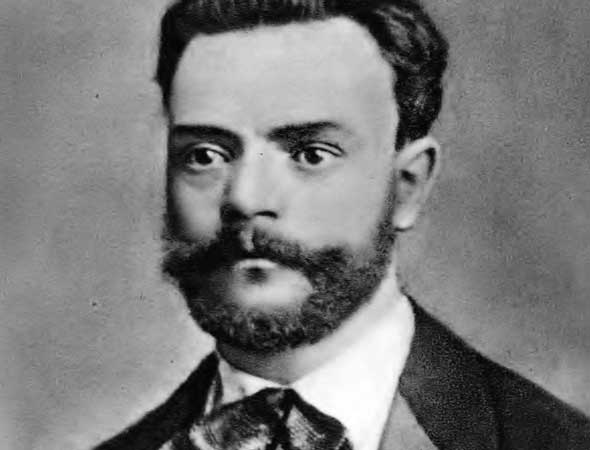DVOŘÁK: Symphony No. 5 in F Major, op. 76
by Jeff Counts
THE COMPOSER – ANTONÍN DVOŘÁK (1841–1904) – Though he was still three years away from international recognition as a composer, 1875 was highly productive for Dvořák and arguably the most prolific twelve-month stretch of his career. In and around his poorly paid duties as organist of Prague’s Church of St. Vojtech, Dvořák managed to crank out an opera (Vanda), a symphony, a piano trio, a piano quartet, a string quintet and his first truly evergreen success, the Serenade for Strings. He had, just that February, received the first of five of his annual “starving artist” grants from the Austrian government, thanks to the efforts of Johannes Brahms and the eminent music critic Eduard Hanslick.

THE HISTORY – The symphony from that robust list of 1875 accomplishments was No. 5 and the publication history of this work is puzzling, and illustrative. Dvořák gave it an Op. 24 designation upon completion, but it was not published until 1888. By that time the composer was a star. His publisher (Simrock), anxious to cash in by presenting it as current and “mature” music from one of its favorite show ponies, called it Op. 76. And if that weren’t confusing enough, Simrock also chose to name the symphony No. 3, since only two of Dvořák’s previous four were publicly available at the time. Scholars in the 20th century would later put all this nonsense to rest, but machinations such as these were not at all uncommon in Dvořák’s day. He indulged in them himself, it has been written, by assigning lower opus rankings to pieces he wanted to publish outside the bounds of his Simrock contract. Number games were good for the goose and the gander, it seemed. Symphony No. 5 was written in a short five weeks during the summer of 1875, and it was a huge departure, in terms of style and mastery, from the 4th Symphony of 1874. Much more than a year seems to have elapsed between the two pieces. No. 4 was full of gallant pretense and other Wagner derivations but, by the time No. 5 was set to paper, Dvořák had begun to settle into the assured Bohemian pastoralism that would define his voice for the rest of his life. The confidence apparent in Symphony No. 5 feels not borrowed, but earned, and the advances Dvořák made in structural clarity, thematic cohesion and tonal invention marked the beginning of a new personal era for the composer. Perhaps Simrock’s financially motivated instinct to place the work in Dvořák’s established canon managed to tell a basic, albeit accidental, truth about it. Symphony No. 5 belongs there, among the masterpieces that made him so famous. Hans von Bulow thought so. When the work was dedicated to him just before publication, he told Dvořák the honor was higher “than any grand cross from any prince.”
THE WORLD – Elsewhere in 1875, the first indoor hockey game was played in Montreal, the first Kentucky Derby occurred in the United States, Tonga became a constitutional monarchy and a British officer invented the pool variant known as Snooker while stationed in India.
THE CONNECTION – Dvořák’s 5th was last performed by Utah Symphony as part of its 2005 European Tour. Keith Lockhart conducted.












